Building date: 1832
Original use:
Corner structures:
Mortar application and content: Vertical, slight embellishment
Types and uses of stones: Glaciated stone, almost too large to meet the specification of "cobblestone". Scaffold holes in wall.
Editor's Note: I urge caution in stating acceptable stone size for an authentic cobblestone structure. Refer to "Cobblestone Masonry, by Carl F. Schmidt 1966 for a typical viewpoint of stone size and shape selection at the time; however, there is a great range in practical use, from utilatarian to decorative, or a mix thereof, often with up to all four walls differing in the stone shapes and sizes to some degree. No two authentic cobblestone structures are exactly the same.
Types and choice of windows:
Structures with similar masonry details:
Masons who worked on building:
Unique features: Scaffold holes in wall. The side-lights of the entrance door not reaching the floor, and the absence of a transom are characteristics of this early house.
Map views courtesy Google Maps. Address is Google Earth confirmed; 42°59'40.25"N 77°19'37.12"W. Current owner of record, Herendeen as of the 2019 Tax Roll. Just sold to Templeton in 2019.
Town of Farmington and Ontario County Maps
This five-bay farm house at 880 County Road 8, town of Farmington, Ontario county (west side of road) was built in 1832 (date stone) for James Herendeen, grandson of local pioneer Nathan Herendeen. It has always been in the same family. It is constructed of large field cobbles and roughly squared limestone quoins. Plugged holes still appear where scaffolding was attached during construction. In 1932 Josephine Herendeen had a "cobblestone arcade" was added in 1932 on the south side where the basement (containing the original kitchen) is exposed. An entrance porch was also added as well as stone piers on the front landing. A cobblestone wall along the south drive and cobblestone front stoop were also added. Cobblestone historian Carl F. Schmidt wrote that this area was "the cradle which gave birth to this type of masonry and started it on its development."
In 1932 Josephine Herendeen had a cobblestone arcade added to the south side where the basement (containing the original kitchen) is exposed. A cobblestone wall along the south drive and cobblestone front stoop were also added. Richard Palmer blog.
"The Cobblestone Houses of Upstate New York", compiled by Dorothy Wells Pease. Research done in collaboration with Hazed B. Jeffery, supplemented with material furnished by Carl F. Schmidt, 1941. Reference the eighth paragraph on page 24.
"The Geological Origin of Cobblestone Architecture", by Gerda Peterich. Specific references to this structure on pages 4, 6, 8, and 15.
"Cobblestone Architecture in the Rochester Area", by Gerda Peterich, 1953. Reference Herendeen House and figures 20 and 41. Editor's Note: This digitized version of the original typescript manuscript is reformatted for digital display, edited for errors, and includes blue tinted highlighted links to improve access within the document, to the appropriate structure pages in the Cobblestone Info Base, or to external resources on the internet. This document is one of two known typescript drafts, likely a thesis or essay bound as a book and apparently never published. One is available in the Cobblestone Museum Resource Center, the other in the University of Rochester Art and Music Library. A companion or precursor typed paper of the same title exists, perhaps used for a talk and/or photographic display of cobblestone structures.
"Old House Journey", A Young Family Embarks on an Ambitious DIY Rehab, Landmarks, Spring 2022. pages 26-29. The Landmark Society of Western New York.
Realty website with additional photographs.
- "Cobblestone Architecture", 1944, Carl Schmidt: Name reference, Herendeen House
- Page 20, Page 49
- "Cobblestone Masonry", 1966, Carl Schmidt: Name reference, Herendeen House
- Page 94
- "The Era of Cobblestone Architecture", unpublished manuscript 1972. To access the manuscript content about this structure, see 72. Ontario County, Herendeen House. This structure is not included in the subsequent book "Cobblestone Landmarks of New York State", 1978.
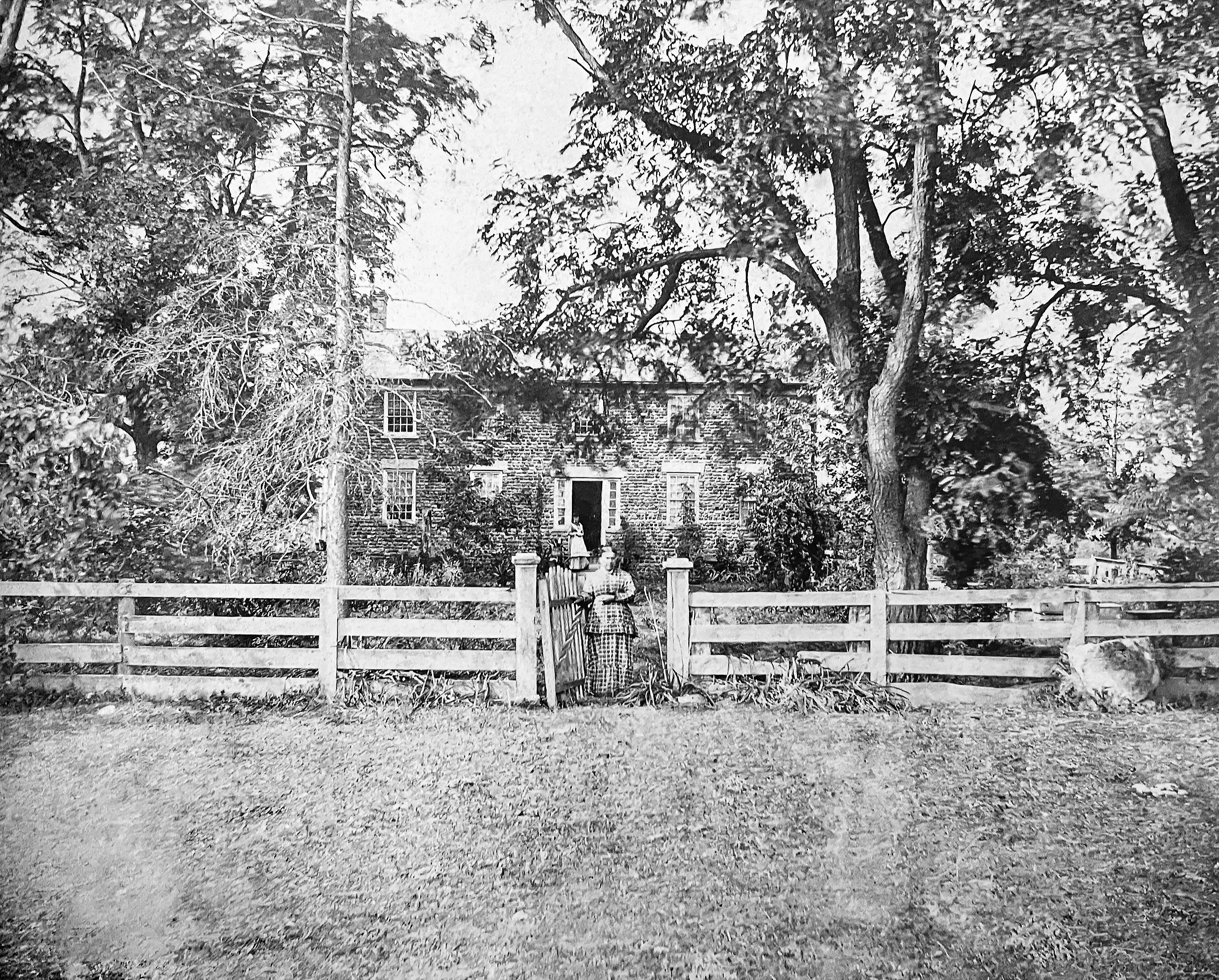 Herendeen House 1800s 230414_IMG_5107.jpg ¹ | 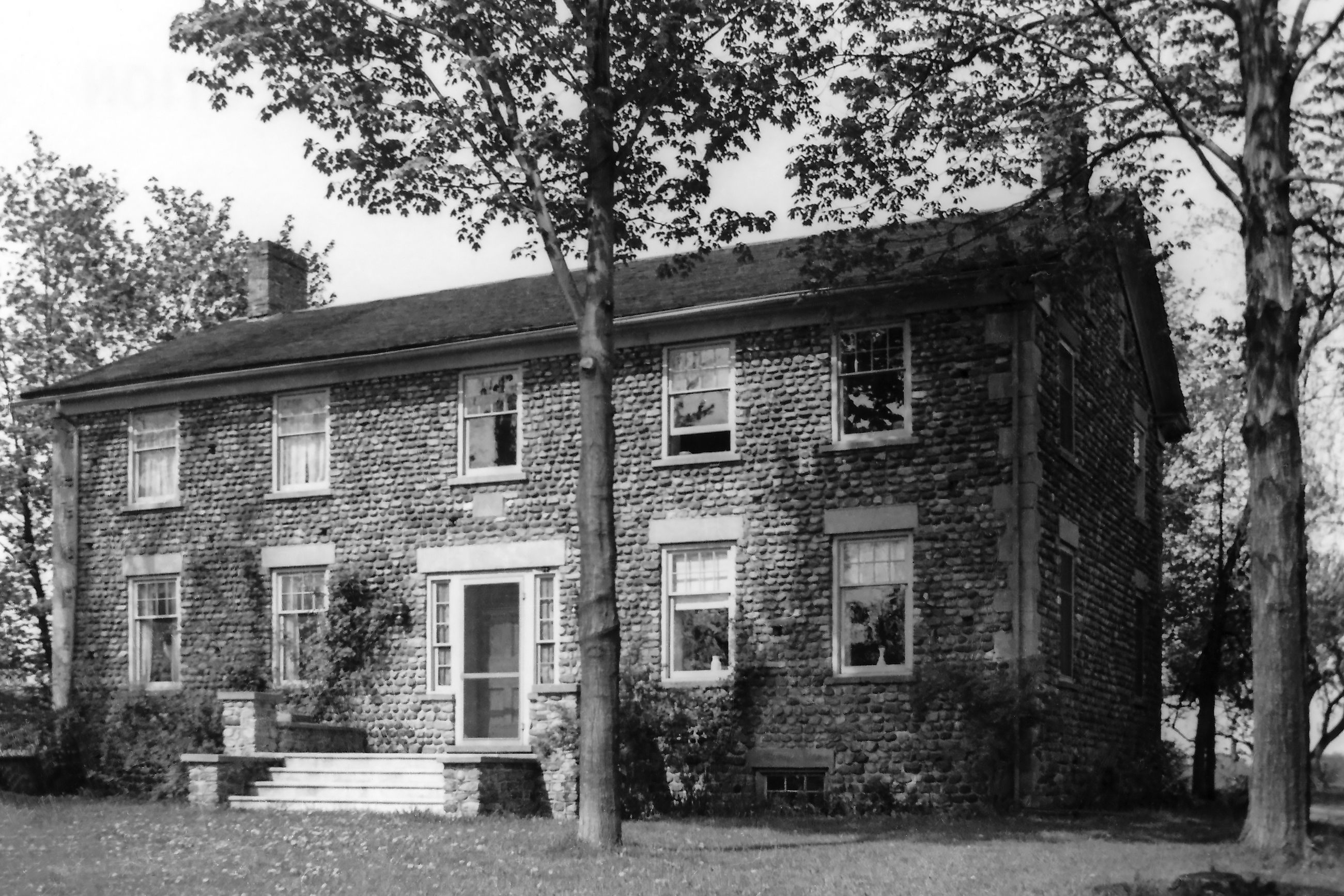 Far-1 Herendeen 2.jpg ² Pease Collection 1940-41. "Pugging Holes" for scaffolding visible in front wall. | 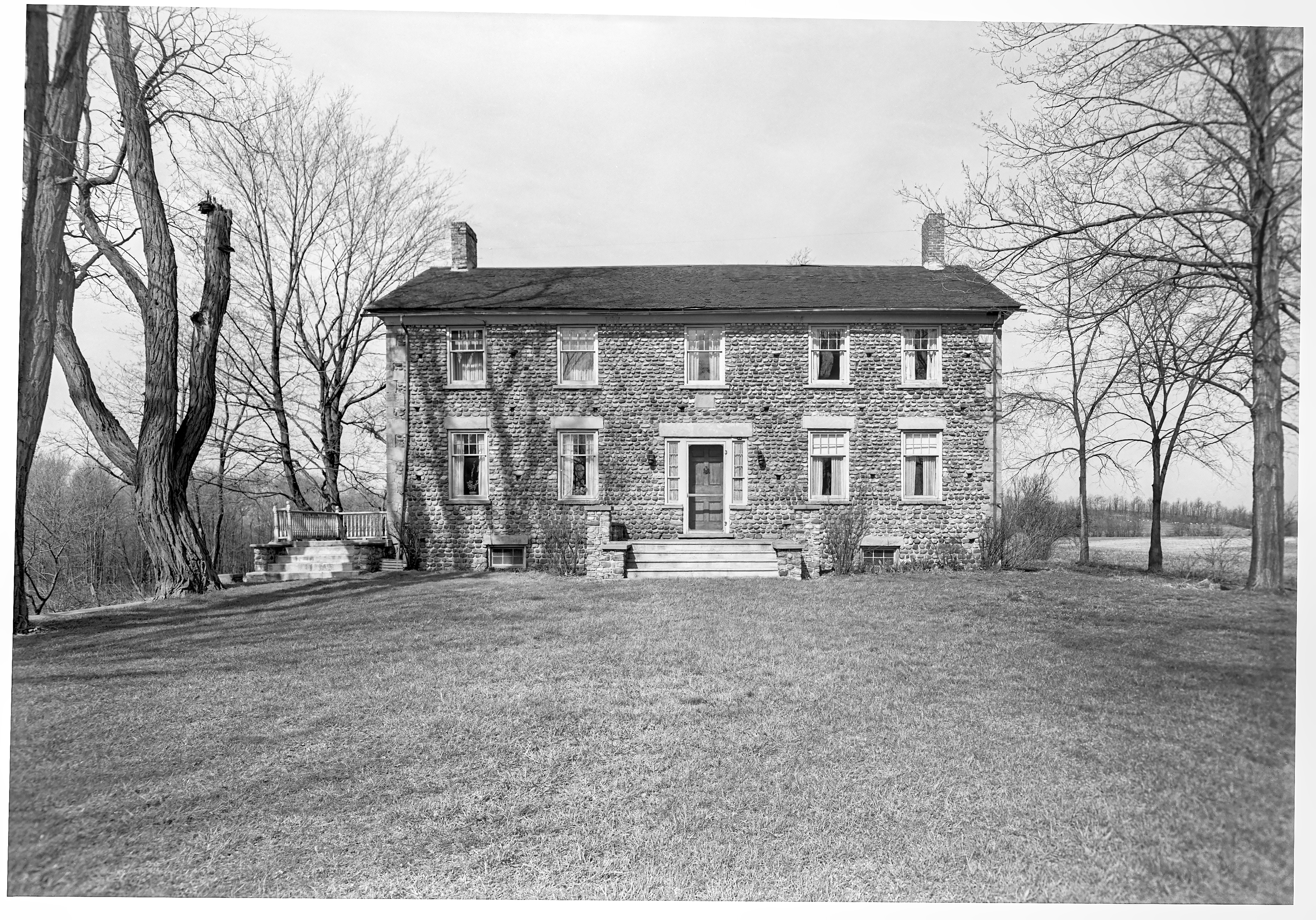 GP Ontario Farmington Far-1 1-2 N.jpg ³ | 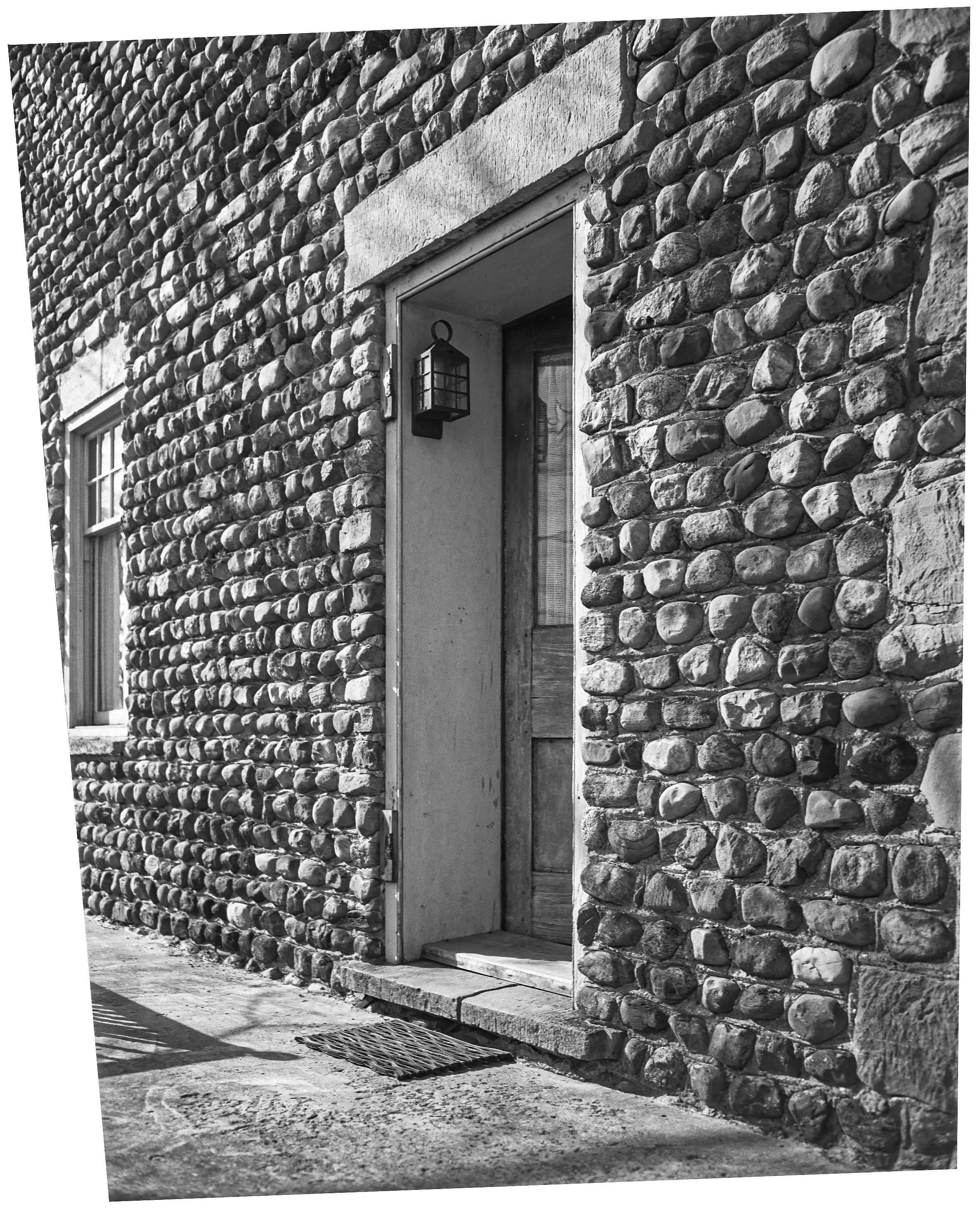 GP Ontario Farmington Far-1 2-1 N.jpg ³ |
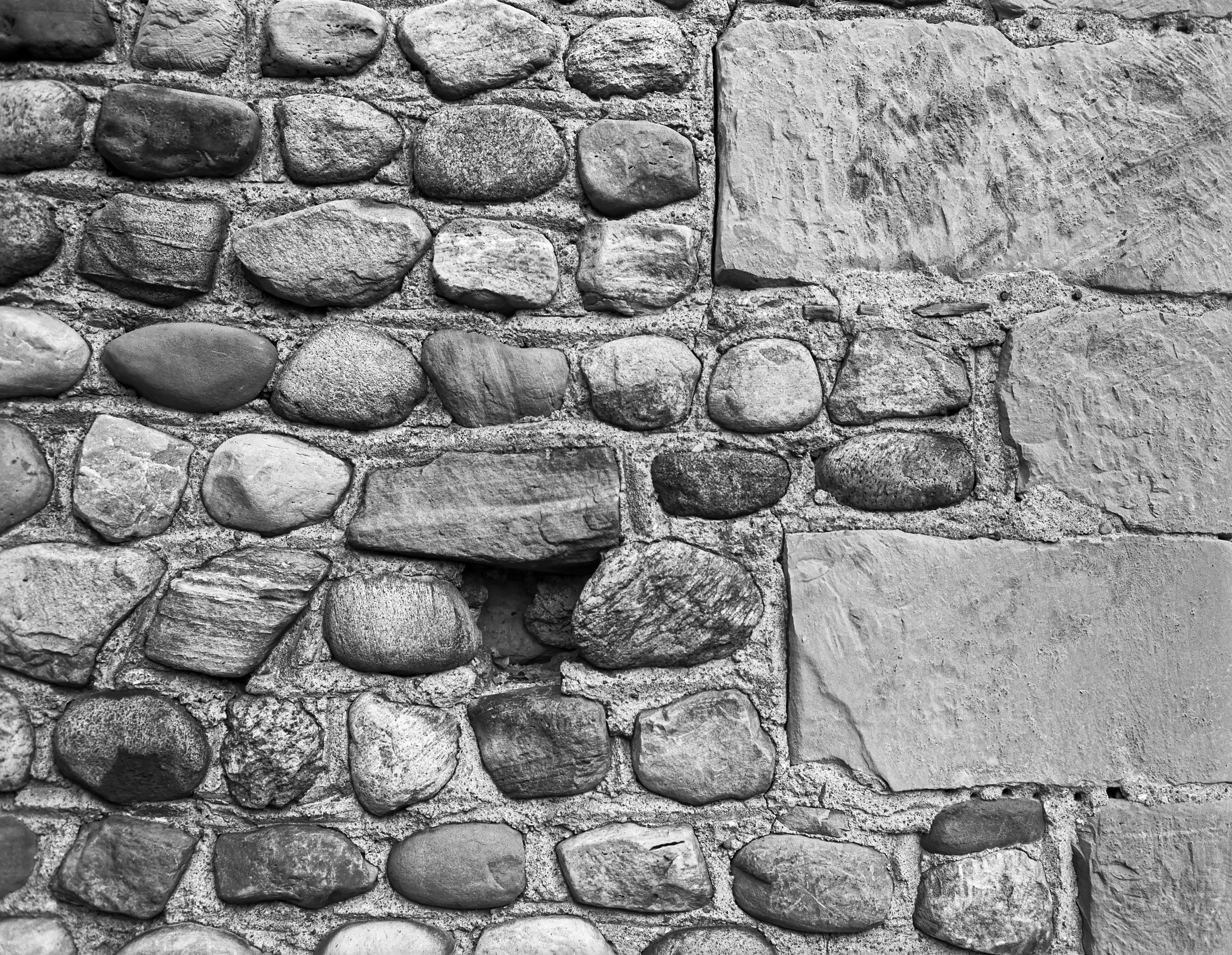 GP Ontario Farmington Far-1 3-1 N.jpg ³ | 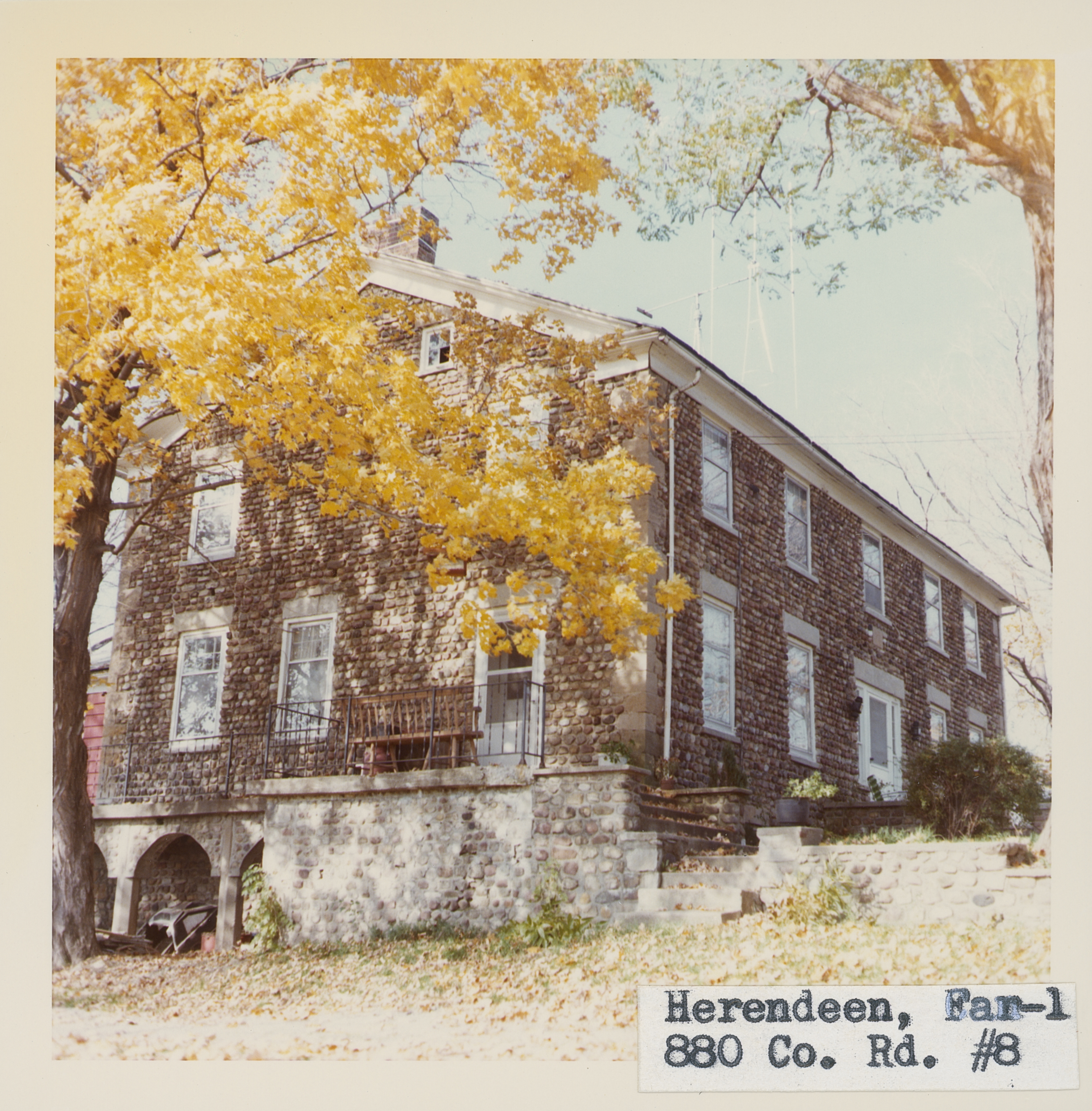 Far_1_1.jpg | 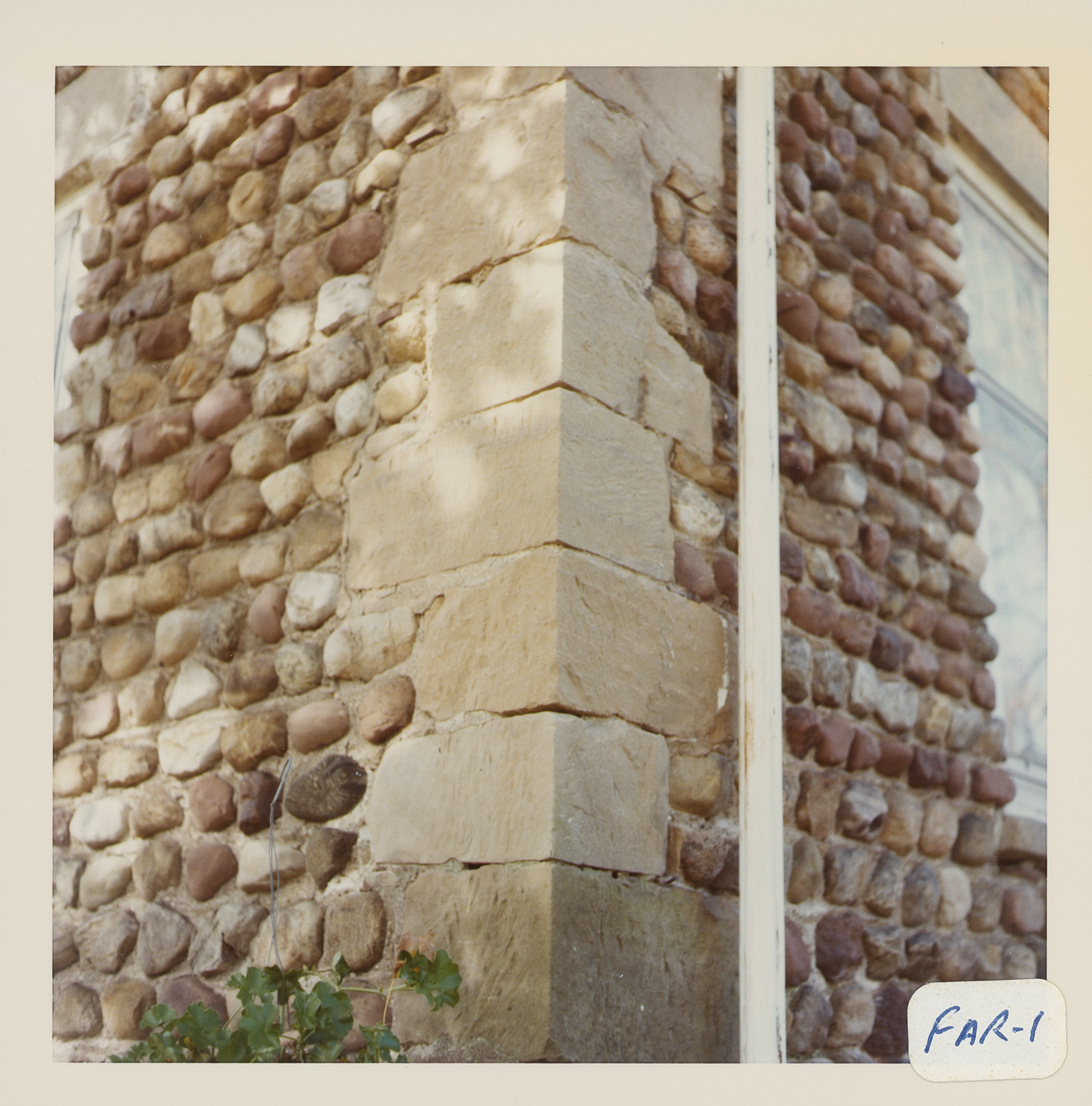 Far_1_2.jpg | 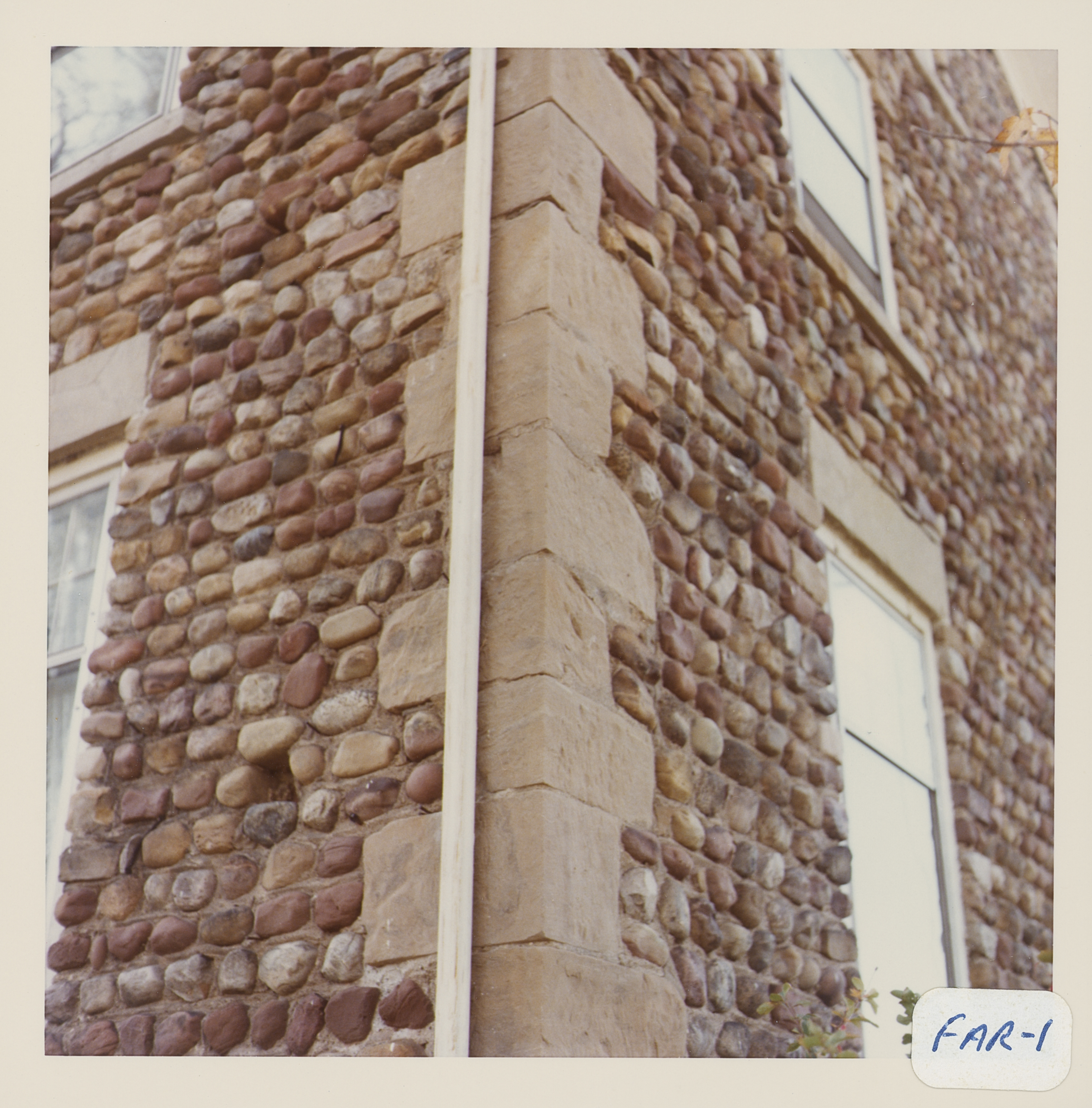 Far_1_3.jpg |
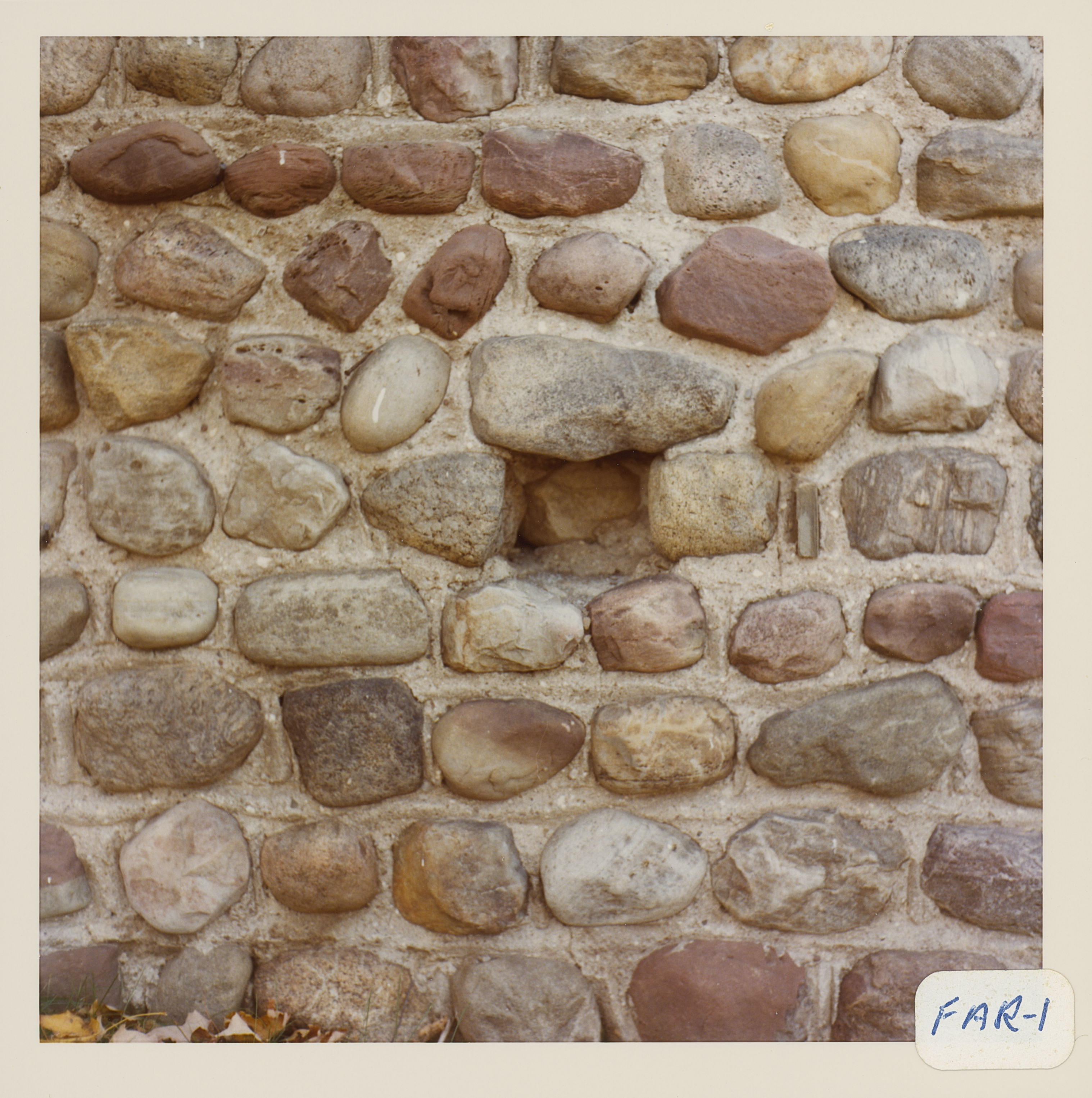 Far_1_4.jpg | 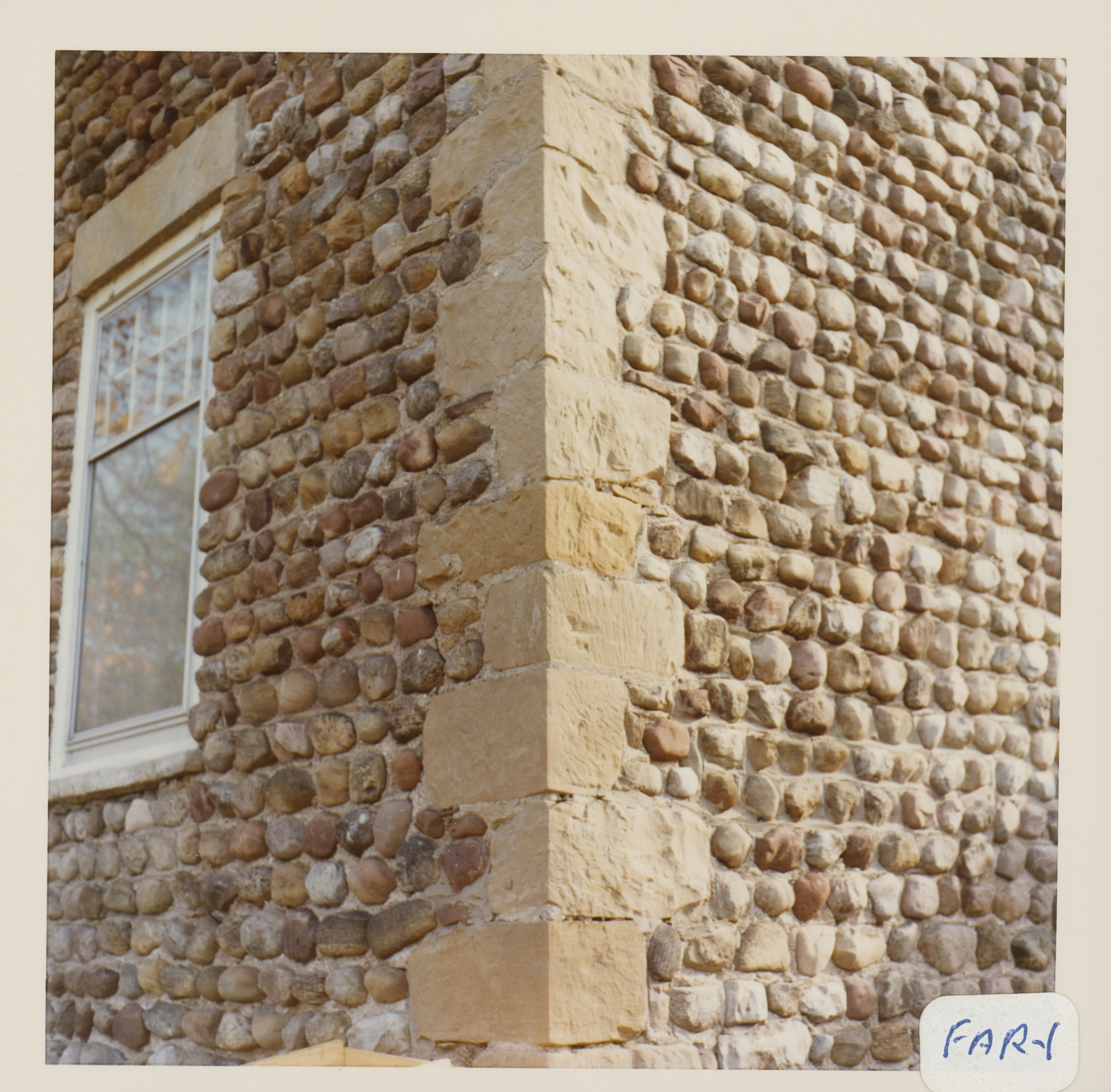 Far_1_5.jpg | 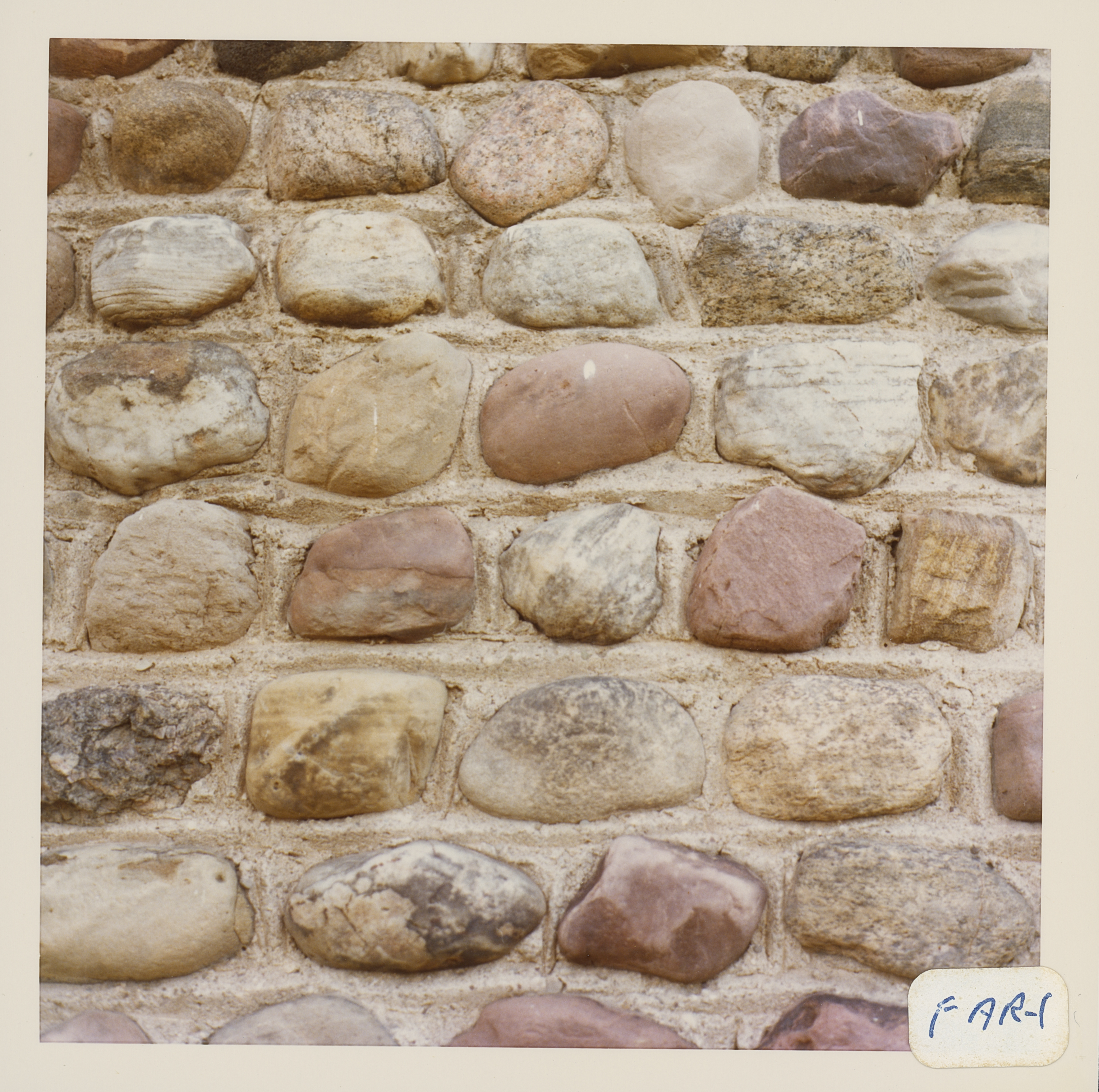 Far_1_6.jpg | 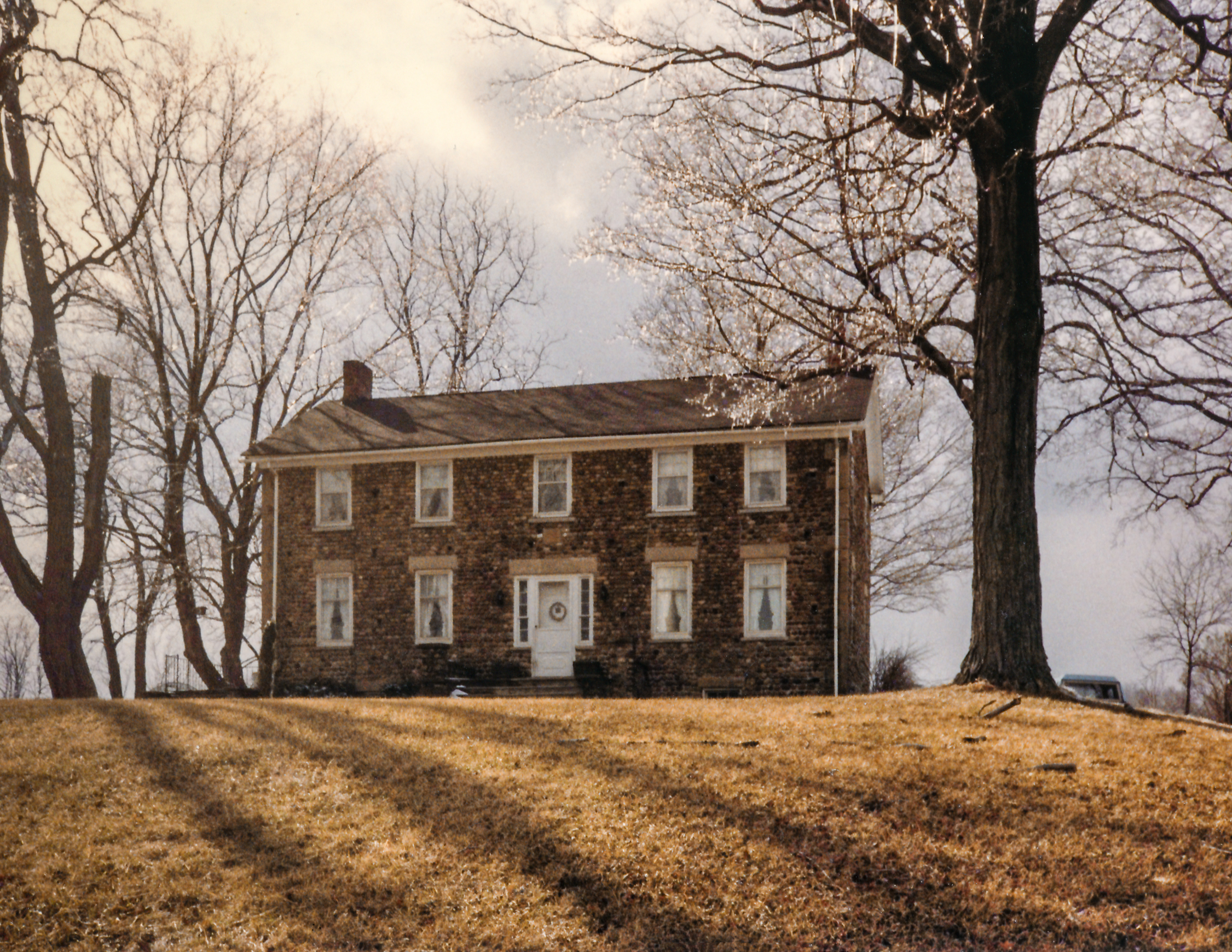 Far-1 Herendeen 1.jpg ² Side porch has been removed. |
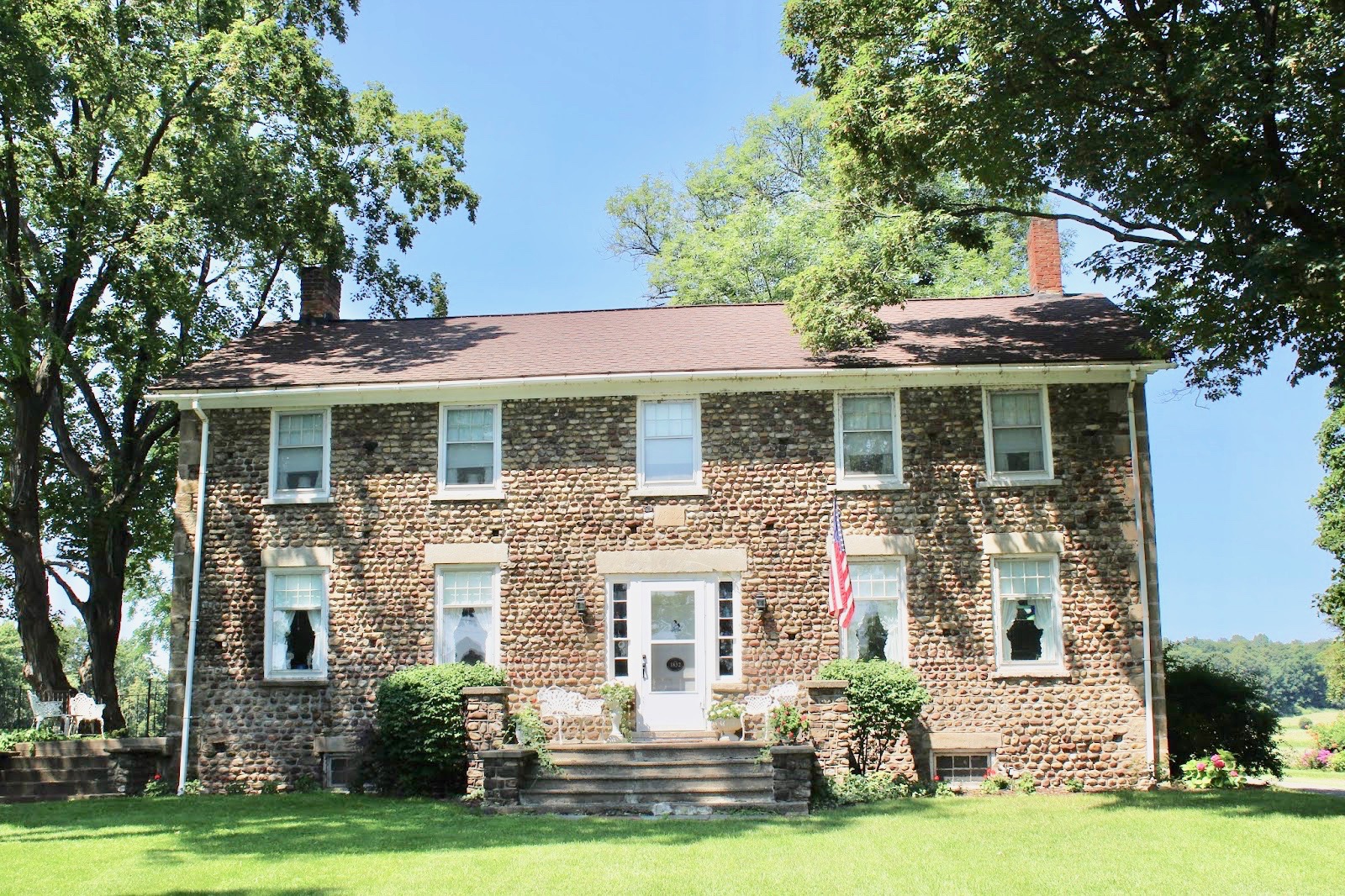 IMG_1511.jpg 4 | 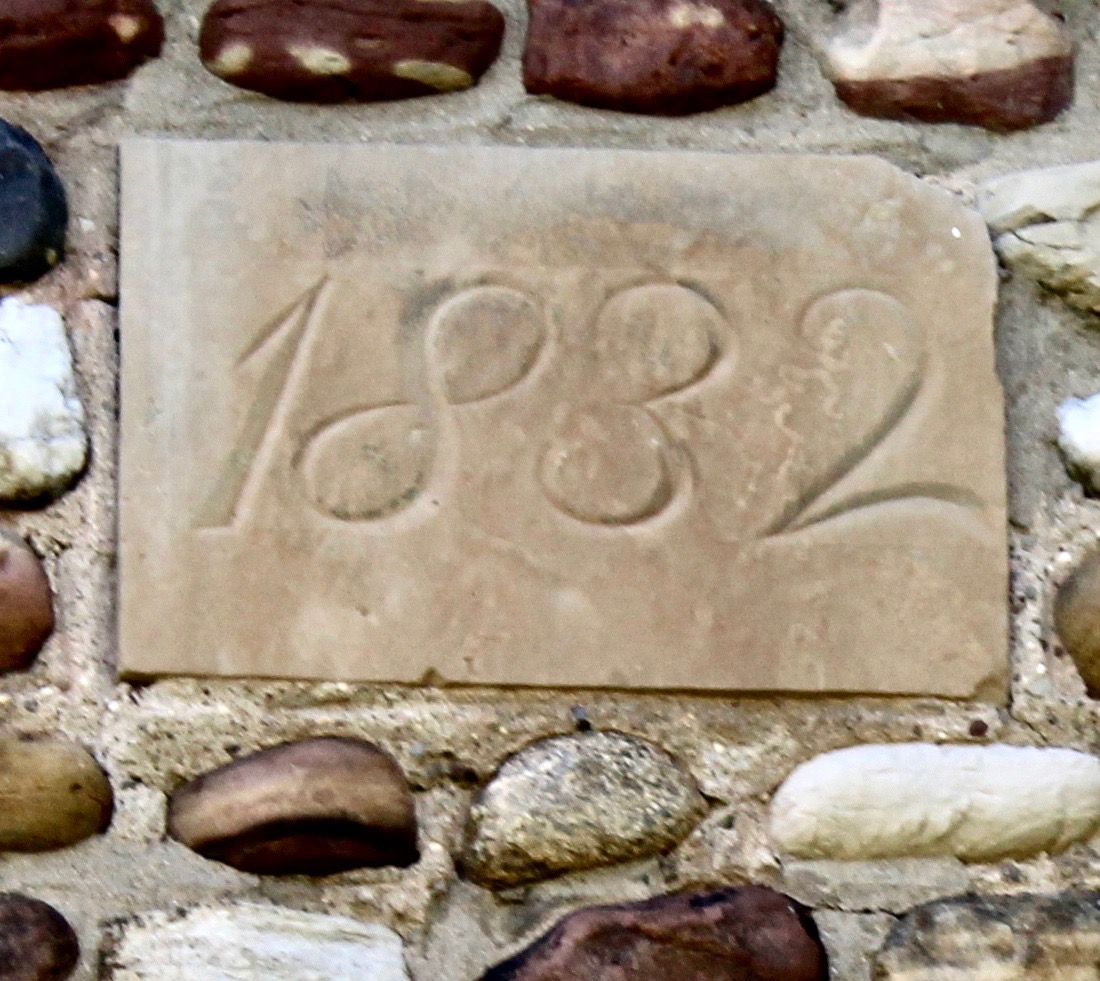 IMG_0285 2.jpg 4 The year "1832" is clearly chiseled on the date stone. | 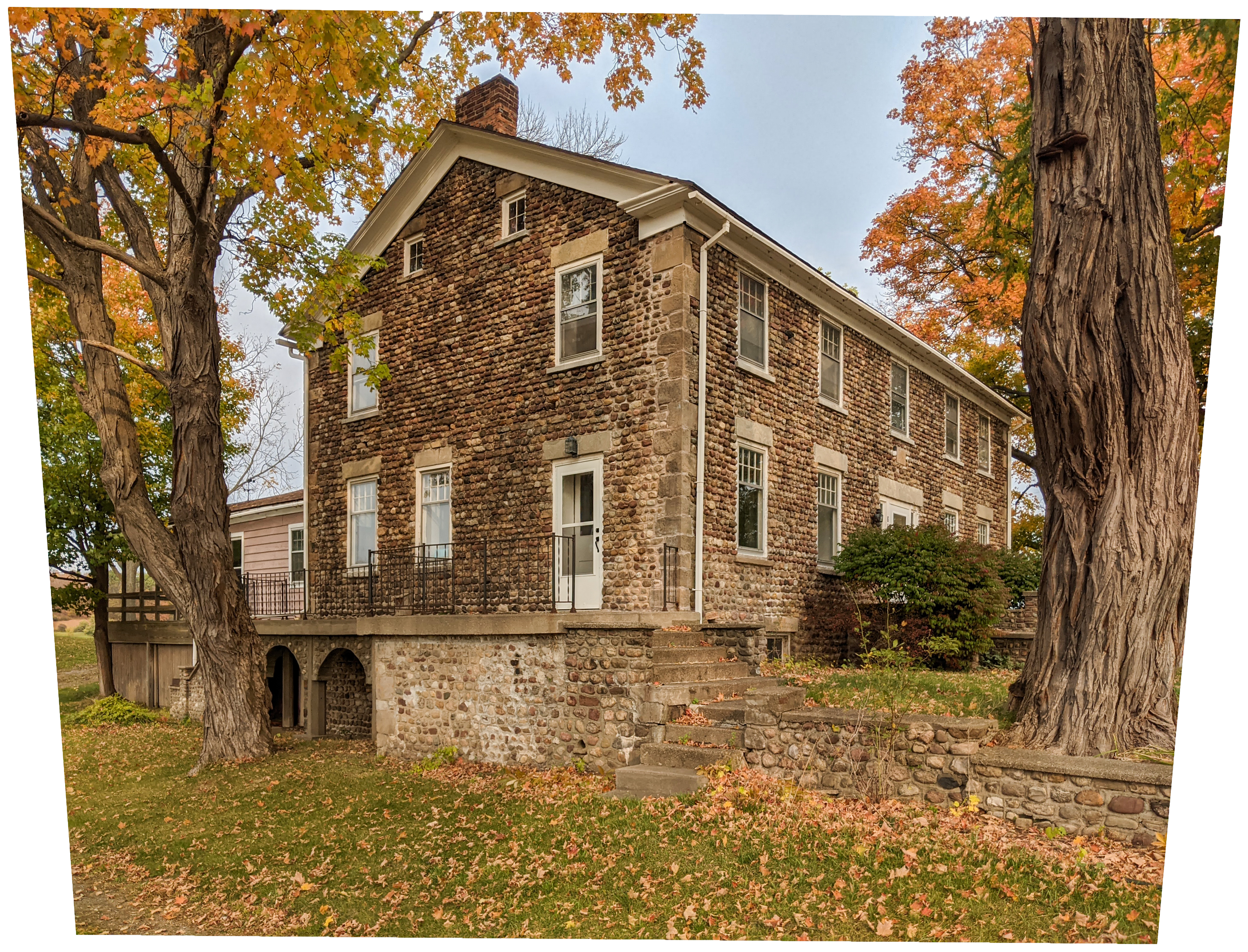 Far-1 Herrenden PXL_20201018_140606891.jpg ¹ 10/18/2020 |
¹ Courtesy homeowners Doug & Amy Templeton. Image provided by Cynthia Howk, The Landmark Society of Western New York.
² Image courtesy Cobblestone Museum.
³ Photography courtesy Gerda Peterich. Cobblestone Museum.
4 Photography courtesy Richard Palmer.
